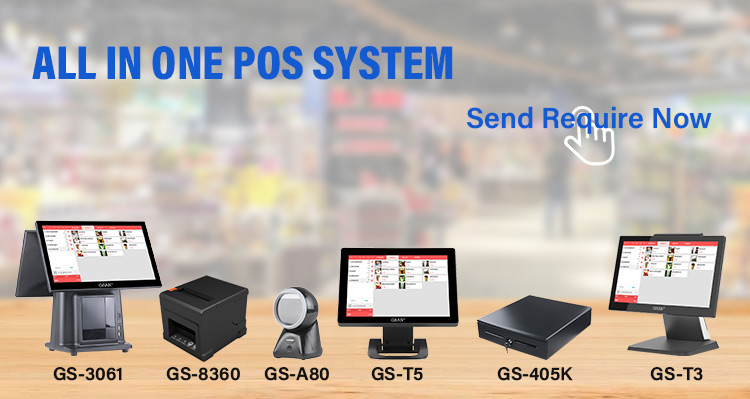







Views: 0 Author: Site Editor Publish Time: 2024-12-23 Origin: Site









POS system (Point of Sale System) refers to a set of software and hardware combinations used by merchants to complete transactions, manage inventory, process payments, and generate sales reports. Whether in retail stores, restaurants, or service industries, POS systems can help improve operational efficiency and provide customers with a smoother shopping experience.
The core function of POS system is to assist merchants in completing sales transactions of goods or services. By scanning the product barcode or manually entering information, the system will automatically calculate the total amount and generate a receipt. This operation function can significantly improve the checkout speed and reduce human errors.
Many POS systems have built-in inventory management functions, allowing merchants to track the inventory status of goods in real-time. When the inventory level approaches the critical value, the system will automatically issue a replenishment reminder to avoid situations where products are sold out or overstocked.
The modern POS system supports a variety of payment methods, including cash, credit card, debit card, mobile payment (such as WeChat payment, Alipay), etc. This flexibility can meet the payment needs of different customers while improving payment efficiency.
The POS system will automatically record every transaction data and generate detailed sales reports. Merchants can use this data to understand the sales trends, customer preferences, and peak periods of their products, in order to develop more scientific business strategies.
Some advanced POS systems integrate customer relationship management functions, which can help merchants record customer information, purchase history, and consumption habits. These data can be used for membership marketing, providing personalized services, and enhancing customer loyalty.

POS cash register: a core device used for processing transactions, typically equipped with a touch screen or buttons.
Cash drawer:Used to store cash and receipts.
Thermal printer: Quickly prints receipts for customers.
Barcode scanner:Scans product barcodes to expedite checkout.
Payment terminal: used for processing credit cards, debit cards, and mobile payments.
The software of the POS system is the control center of the entire system. It includes modules such as sales management, inventory tracking, and data analysis, and can be customized according to the needs of different industries.
By automating transactions and management processes, POS systems can significantly improve work efficiency and reduce errors caused by manual intervention.
Fast checkout and diverse payment methods make shopping more convenient for customers, thereby increasing their satisfaction and return rate.
By utilizing the data provided by POS systems, merchants can more accurately understand market trends and customer needs, thereby making more targeted business decisions.
The POS system automatically records daily transactions and financial information, making account reconciliation and tax declaration more convenient.
When choosing a POS system, merchants need to consider the following points:
Industry needs: Different industries have different requirements for POS systems. For example, the restaurant industry may need table management features, while retail focuses more on inventory tracking.
Budget: Determine an acceptable budget range and choose the system with the highest cost-effectiveness.
Compatibility: Ensure that the POS system is compatible with existing devices and payment methods.
After sales support: Choose suppliers who provide good after-sales service and technical support.
Scalability: Leave space for future business expansion and choose a system that supports modular expansion.

POS system is one of the essential tools for modern merchants, which not only simplifies the transaction process but also helps merchants achieve comprehensive business management. If you haven't installed a POS system yet, you can choose a suitable solution based on your own needs to take your business to the next level!